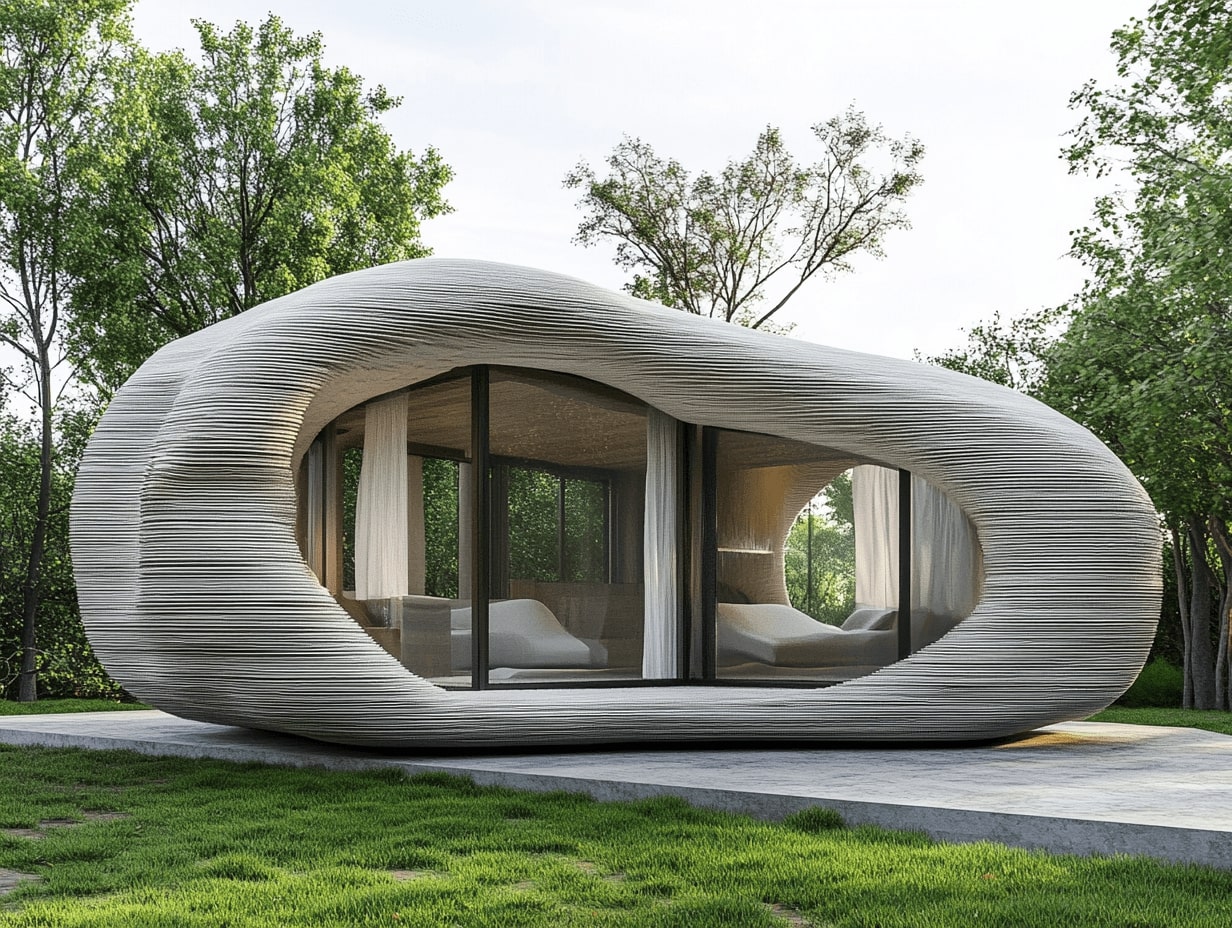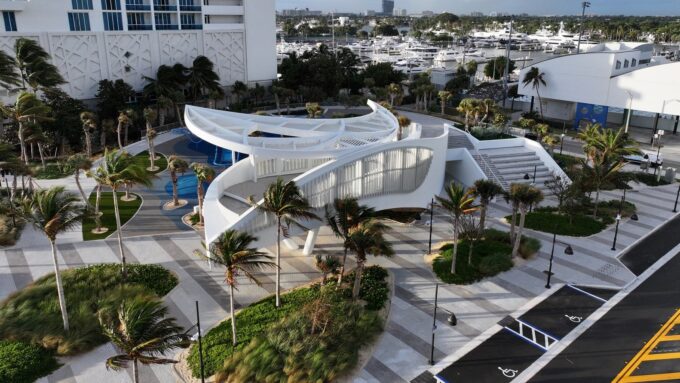- Home
- Articles
- Architectural Portfolio
- Architectral Presentation
- Inspirational Stories
- Architecture News
- Visualization
- BIM Industry
- Facade Design
- Parametric Design
- Career
- Landscape Architecture
- Construction
- Artificial Intelligence
- Sketching
- Design Softwares
- Diagrams
- Writing
- Architectural Tips
- Sustainability
- Courses
- Concept
- Technology
- History & Heritage
- Future of Architecture
- Guides & How-To
- Art & Culture
- Projects
- Interior Design
- Competitions
- Jobs
- Store
- Tools
- More
- Home
- Articles
- Architectural Portfolio
- Architectral Presentation
- Inspirational Stories
- Architecture News
- Visualization
- BIM Industry
- Facade Design
- Parametric Design
- Career
- Landscape Architecture
- Construction
- Artificial Intelligence
- Sketching
- Design Softwares
- Diagrams
- Writing
- Architectural Tips
- Sustainability
- Courses
- Concept
- Technology
- History & Heritage
- Future of Architecture
- Guides & How-To
- Art & Culture
- Projects
- Interior Design
- Competitions
- Jobs
- Store
- Tools
- More
3D Printed Homes Guide: Time, Cost, and Ownership Explained
Discover how 3D-printed homes are revolutionizing construction with faster build times, reduced costs, and eco-friendly designs. Explore their benefits, challenges in ownership, and future potential in reshaping the housing market. Learn how this groundbreaking technology addresses global housing needs with sustainability, affordability, and innovation at its core.

Imagine a world where homes are built in days instead of months, with costs slashed and designs tailored to our exact needs. That’s the promise of 3D-printed homes, a groundbreaking innovation that’s reshaping how we think about construction and homeownership. This technology isn’t just futuristic—it’s here, and it’s already making waves in the housing market.
As we explore 3D printed construction, questions about time, cost, and ownership naturally arise. How long does it take to build one? Is it truly more affordable? And what does owning a 3D-printed home mean for us as homeowners? Let’s dive into the details and uncover how this cutting-edge approach could redefine where and how we live.
Table of Contents
ToggleWhat Are 3D Printed Homes?
3D printed homes are residences constructed using additive manufacturing technology. Specialized 3D printers layer material, typically concrete or similar compounds, following a pre-designed digital blueprint. This process builds the structure layer by layer, eliminating traditional construction methods like bricklaying or framing.
These homes integrate precision and speed into construction, reducing human labor and material waste. Unlike conventional buildings, 3D printed homes can incorporate intricate architectural designs with minimal added cost. Examples include curved walls, built-in cavities for utilities, and modular layouts tailored to individual needs.
The main components of 3D printed homes often include the building’s walls, foundation, and sometimes roofing structures. Secondary elements like plumbing, electrical systems, and interior finishes are still installed manually, bridging traditional and modern practices.
We’ve seen 3D printed homes used for affordable housing projects, emergency shelters, and luxury custom dwellings. Companies like ICON and Mighty Buildings have pioneered projects worldwide, demonstrating the versatility of this innovative technology.

Benefits Of 3D Printed Homes
3D-printed homes present numerous advantages, combining innovative technology with affordability and efficiency. These benefits appeal to both homeowners and developers, transforming traditional construction methods.
Sustainability And Eco-Friendliness
3D-printed homes minimize waste by using only the exact amount of material required. This precision reduces excess, unlike traditional methods, which often generate significant waste. Some materials, like concrete mixes infused with recycled elements, further enhance eco-friendliness. Energy-efficient designs, such as insulated walls and optimized layouts, also enable lower energy consumption. Fewer transportation needs for materials during construction reduce carbon emissions.
Reduced Construction Time
Additive manufacturing technology significantly lowers construction time for 3D-printed homes. Basic structures can be printed in 24-48 hours, depending on size and complexity. Compared to months of manual labor in conventional methods, this speed offers substantial time savings. Emergency housing deployments and affordable housing projects benefit greatly from this rapid timeline. Faster builds also mitigate weather-related delays since printing often continues regardless of natural conditions.
Customization Options
Design flexibility is a standout feature of 3D-printed homes. Complex geometries or curves, which entail high costs in traditional builds, are achievable at no extra expense with 3D printing. Homeowners can personalize layouts, wall textures, and unique structural features through digital blueprints. For instance, companies like Mighty Buildings provide tailored solutions for backyard units and accessory dwelling spaces. This level of customization caters to various needs, from minimalist designs to luxury living.

Time Considerations For 3D Printed Homes
3D printed homes offer significantly faster construction times compared to traditional building methods. However, understanding how time factors into both the printing process and preparation stages is essential for effective project execution.
Speed Of Construction
The printing process for 3D printed homes drastically reduces construction timelines. Large-scale 3D printers can complete the structural components of a home, such as walls and foundations, within 24-48 hours. This efficiency depends on factors like the size of the house, materials used, and environmental conditions such as temperature and humidity. For instance, small residential units often take less than 24 hours for the main structure, while larger or more complex designs may require several days.
Tasks outside the scope of printing, like plumbing, electrical work, and interior finishing, use traditional methods, which can extend total project timelines. Including these steps, the full construction duration of a 3D-printed home typically ranges from one to several weeks, far shorter than the months required for conventional builds.
Project Planning And Preparation
Project planning and site preparation play a critical role in the overall timeline. Before printing begins, digital blueprints must be created, which can take days to weeks depending on the home’s design intricacy and custom features. Additionally, site preparation, including leveling the ground and installing infrastructure like plumbing and electrical lines, is usually required beforehand.
Permitting and regulatory approvals can also introduce delays, as local building codes for 3D printed homes are still evolving. Efficient coordination during these phases ensures smooth transitions from design to printing and final construction. Advanced planning significantly reduces the risk of on-site delays, maximizing the time efficiency 3D printed technology offers.

Cost Implications Of 3D Printed Homes
The cost of 3D-printed homes involves upfront expenses, long-term savings, and unique maintenance considerations. Understanding these factors helps evaluate the financial viability of these innovative structures.
Initial Construction Costs
3D-printed homes generally reduce initial construction costs compared to traditional methods. Additive manufacturing minimizes material waste by using precise measurements and often incorporates affordable materials like concrete or recycled mixes. Human labor requirements are also lower since automated printers handle much of the construction, reducing workforce expenses. For example, small-scale homes have been constructed for as little as $10,000-$20,000, while larger or custom designs may fall within the $100,000-$150,000 range, depending on size and features.
However, upfront costs can vary based on equipment, raw materials, and project-specific factors like location. Advanced 3D printers used for construction and the software required to create digital blueprints represent significant investments. Site preparation, foundation work, and the integration of traditional elements such as plumbing and electrical systems also add to the total cost.
Long-Term Cost Savings
3D-printed homes offer notable long-term cost benefits. Energy-efficient designs and sustainable construction materials lower utility expenses over time. Many structures incorporate advanced insulation and passive energy systems, reducing heating and cooling costs. Additionally, homeowners save on labor and material costs during extensions or modifications, as 3D printers can be reprogrammed to create specific components.
Operational costs also decrease with reduced waste and minimal ongoing maintenance. For instance, smoother surfaces on concrete walls printed with advanced machinery often resist damage better than traditional brickwork, extending their durability. These savings are particularly evident in low-income and disaster relief housing projects, where affordability is a crucial factor.
Maintenance And Repairs
Maintenance requirements for 3D-printed homes differ from those of traditional houses. The uniformity and strength of 3D-printed concrete or composite materials reduce vulnerabilities to issues like cracking, pest infestations, and water damage. Repairs are often simpler, as replacement components can be custom-printed if damage occurs.
Long-term durability depends on the quality of the materials used and adherence to building standards during construction. Periodic inspections help ensure structural integrity and identify potential issues early. In cases where advanced materials or reinforcement techniques are used, we find that maintenance needs are further minimized.

Ownership Of 3D Printed Homes
Owning a 3D-printed home offers unique advantages but involves navigating specific legal, financial, and insurance-related complexities. These factors are critical in understanding the broader implications of this innovative housing technology.
Legal And Regulatory Considerations
Regulations for 3D-printed homes vary by region, as building codes and zoning laws are often not updated to include additive manufacturing technologies. Permits may require additional approval processes to ensure these structures meet safety and compliance requirements. For example, some municipalities mandate detailed documentation proving material strength and durability. Inconsistent policies across jurisdictions can lead to delays in project approvals and construction timelines.
Property assessments can also differ for 3D-printed homes. Local authorities might not have established valuation frameworks, which could impact property taxes, resale values, and legal ownership rights. Advocacy for clearer regulations is essential to streamline the integration of these homes into existing legal and regulatory systems.
Financing And Insurance Challenges
Financing 3D-printed homes presents obstacles due to the relative novelty of the technology. Traditional mortgage providers may hesitate to fund these properties, as appraisals and risk assessments for 3D-printed structures are less standardized. Loans might require higher interest rates or specialized agreements until market understanding of this housing type improves.
Insurance coverage can also be complicated, with providers requiring evidence of material reliability, safety, and long-term durability. Policies may include limitations or higher premiums until insurers collect sufficient data on these homes’ performance. Detailed documentation, including material certifications and engineering reports, can help negotiate more favorable terms. Over time, as the adoption of 3D-printed homes increases, these challenges are likely to be mitigated.

The Future Of 3D Printed Homes
Advancements in additive manufacturing technology continue shaping the future of 3D-printed homes. Innovations like multi-material printing and robotic integration are enhancing design complexity, construction speed, and structural integrity. Ongoing research into sustainable materials such as geopolymer concrete and bio-based composites aims to make these homes even more eco-friendly. These developments point to a future where efficiency and sustainability in construction become the norm.
Wider adoption of 3D-printed homes depends on expanding infrastructure and regulatory frameworks. Municipalities and governments are beginning to embrace this technology, incentivizing projects through grants and policy adjustments. As zoning regulations, building codes, and legal standards align with additive manufacturing, adoption barriers are decreasing, fostering more widespread usage.
Global housing crises highlight the relevance of 3D-printed homes. With the ability to rapidly construct affordable and customizable housing, this technology addresses critical issues like urban overcrowding and natural disaster recovery. Entire communities of 3D-printed homes, such as those developed by New Story and ICON in Mexico, demonstrate scalable solutions for global housing shortages.
Market trends suggest a growing acceptance of 3D-printed homes, with investments from both private and public sectors supporting innovation. Companies like PERI Group are partnering with housing developers to scale production, while governments explore 3D-printed infrastructure for public housing. These collaborations are likely to increase accessibility and drive down costs further.
As adoption grows, consumer lifestyles may evolve alongside 3D-printed home technology. Features like on-demand component printing, modular upgrades, and smart home integrations could redefine how we interact with our living spaces. Pioneering projects in the luxury sector are integrating these advanced capabilities, offering glimpses of the possibilities in custom architecture.
The future of 3D-printed homes hinges on adaptability, innovation, and widespread acceptance. By addressing regulatory challenges, advancing material science, and demonstrating scalability, these homes are primed to transform both the construction industry and global housing landscapes.
Conclusion
3D-printed homes redefine how we approach construction, balancing speed, cost-efficiency, and sustainability. This innovative method integrates advanced additive manufacturing technology to create structures that are not only eco-friendly but also highly customizable. By minimizing material waste and reducing labor dependency, these homes offer an economical and practical solution to pressing housing demands.
Ownership of 3D-printed homes highlights distinct considerations, including legal, financial, and regulatory complexities. Regional variations in building codes and challenges with financing and insurance demonstrate the evolving nature of this market. As adoption grows, these barriers are expected to lessen, supported by advancements in technology and updates to legal frameworks.
Future developments in multi-material printing, robotic automation, and sustainable practices will continue to enhance the viability of 3D-printed homes. These innovations are set to address critical housing issues globally, offering scalable solutions for urban overcrowding, disaster recovery, and more. As we witness increased investment and regulatory support, 3D-printed homes have the potential to reshape the housing industry and redefine homeownership for years to come.
- 3D printed home builders
- 3D printed home cost vs traditional
- 3D printed home designs
- 3D printed home ownership
- 3D printed home technology
- 3D Printed Homes
- 3D printed homes pros and cons
- 3D printed house construction time
- 3D printed house cost breakdown
- 3D printed house guide
- 3D printed housing market
- 3D printing home construction
- advantages of 3D printed homes
- affordable 3D printed homes
- best 3D printed home companies
- building a 3D printed house
- buying a 3D printed home
- cost of 3D printed homes
- custom 3D printed homes
- future of 3D printed houses
- how durable are 3D printed homes
- how to build a 3D printed home
- time to build 3D printed house
illustrarch is your daily dose of architecture. Leading community designed for all lovers of illustration and #drawing.
Submit your architectural projects
Follow these steps for submission your project. Submission FormLatest Posts
3D Printed Homes: Time, Cost, and What to Expect
3D printed homes explained: realistic timelines (24–72h walls, 8–16 weeks total), true...
How a Contact Centre Boosts Trust in Your Building Business
In construction, trust is the glue that holds projects together. Clients need...
How Real Time Parcel Geolocation Is Redefining Last Mile Efficiency for Modern Businesses
Last mile delivery has become the most critical point in the customer...
How Can Small Spaces Stay Stylish and Relaxing?
In today’s fast-paced urban lifestyle, small living spaces are becoming increasingly common....












Leave a comment